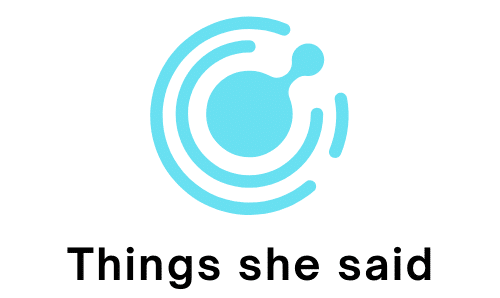The poultry industry is evolving rapidly these days, and demand for poultry products is growing all the time. For companies in the sector, efficiency and innovation have become essential if they are to survive in this highly competitive landscape. As well as satisfying demand, these innovative solutions make it easier for companies to comply with increasingly high standards of quality and sustainability. To kick-start this technological revolution, you can adopt Ceva Ecat-iD, a leading supplier of automation solutions specially designed for hatcheries. Find out in this article how this innovative technology meets the various challenges of hatchery management. You would also discover later more about the trends and future prospects facing the sector.
Current challenges in hatchery management
Before looking at solutions, it is worth highlighting the challenges facing hatchery management in the poultry industry. To begin with, there is the relentless pressure to maximise productivity in the face of growing demand. Reducing losses is therefore another major challenge to improving hatchery efficiency and ensuring optimum production.
A lire en complément : Can autonomous drones be used for environmental monitoring and wildlife conservation?
Secondly, the industry must comply with strict quality standards. Quality control is one of them. Hatcheries must therefore guarantee the regular hatching of healthy chicks with similar characteristics in terms of weight, size and health.
Faced with these challenges, hatchery managers are increasingly turning to automation and intelligent solutions. By taking advantage of advanced technologies, hatcheries are overcoming today’s challenges and positioning themselves for long-term success.
A lire en complément : What rental management services are available when I rent a chalet ?
So it’s safe to say. The integration of automation and intelligent solutions in the hatcheries has improved overall operational efficiency. So if you’re in the poultry industry, don’t wait any longer before adopting these new solutions. They’ll help you to meet all the challenges of this sector of activity.
Automation for efficiency
The automation technologies offered by Ceva Ecat-iD are revolutionising hatchery operations by generating significant improvements in efficiency and productivity. These technologies encompass a range of solutions designed to streamline various aspects of hatchery management. These range from egg sorting and vaccination to cooking and egg analysis.
For example, by automating repetitive and labour-intensive tasks, hatcheries can significantly increase their operational efficiency. They can also greatly reduce the risk of human error. For example, it is estimated that between 3% and 8% of eggs are spilled due to incorrect handling of crimping trays.
Automated sorting systems in the egg processing room also use advanced imaging technology to accurately categorise eggs. This enables grading by size, weight and quality, ensuring consistent incubation conditions and hatch rates.
Further down the line, automated vaccination systems enable precise and consistent administration of vaccines. This minimises the risk of under- or over-dosing and ensures optimum chick health.
Intelligent solutions for optimised management
As well as automation, innovative solutions enable real-time monitoring. A tool like Ceva Eat-ID offers cutting-edge technology to optimise hatchery management. These technologies incorporate advanced sensors, connectivity and data analysis. By deploying intelligent sensors throughout the hatchery environment, it becomes possible to access unprecedented information on crucial parameters such as:
- temperature ;
- humidity
- air quality ;
- etc.
By continuously monitoring these key indicators, you can make proactive decisions. Corrective action can be taken more quickly. Using a data dashboard, a hatchery manager can react quickly to any deviation from the desired conditions.
If the temperature rises, he can lower the temperature inside by turning on the air conditioning. When air quality deteriorates, he can also take measures such as activating additional ventilation systems or cleaning existing filters. This will improve air circulation and maintain optimum conditions for embryonic development. Each of these solutions guarantees constant performance and consistent product quality.
Case study : Implementation success and results
A convincing example of the transformative impact of Ceva Ecat-iD solutions is presented in a recent case study. A hatchery implemented automation and intelligent solutions provided by Ceva Ecat-iD to address long-standing challenges.
Following implementation, the hatchery saw significant improvements in several key performance indicators. Automation initially simplified processes such as egg sorting, vaccination and temperature control. As a result, the company’s workforce has been reduced, while productivity has increased significantly.
In addition, real-time monitoring facilitated data-driven decision-making, leading to better quality control and reduced waste. After just a few days, the hatchery had achieved measurable results. So it’s a success all round.
Looking ahead: Trends and innovations in hatchery management
Although it may seem difficult to improve on current innovations, it should be stressed that there is still room for improvement. Trends and innovations in hatchery management therefore have a bright future, especially given the explosion in AI.
Over the next few years, we may therefore see the full integration of artificial intelligence and machine learning algorithms into hatchery operations. Further integration of autonomous robots and even greater connectivity are also conceivable.
More advanced genetic selection may also make it possible to produce chicks that are more resistant to disease, more productive and better adapted to the environment. So the future looks bright for the poultry industry.
To make the poultry industry even more environmentally friendly, more and more research is also focusing on sustainable solutions. As a company, you can also make a difference by funding research.
Conclusion
In conclusion, the integration of automation and intelligent solutions is revolutionising hatchery management. Not only does it meet today’s challenges, it also paves the way for a more efficient and sustainable future. Adopting this innovation is therefore vital if hatcheries are to remain competitive, guaranteeing optimum productivity, quality and profitability. So if you’re a player in this field, don’t wait any longer before taking the plunge by adopting the Ceva Ecat-iD solution, for example.
To make the most of these new solutions, we recommend that you invest in training your staff. This will enable them to adapt better to the changes that have taken place and to those that are soon to come.






